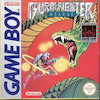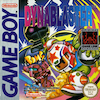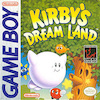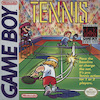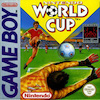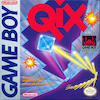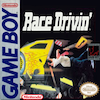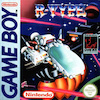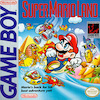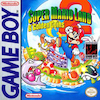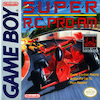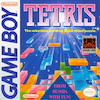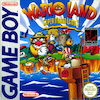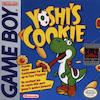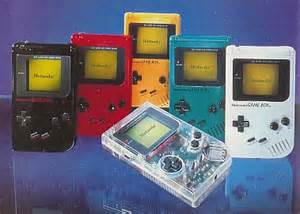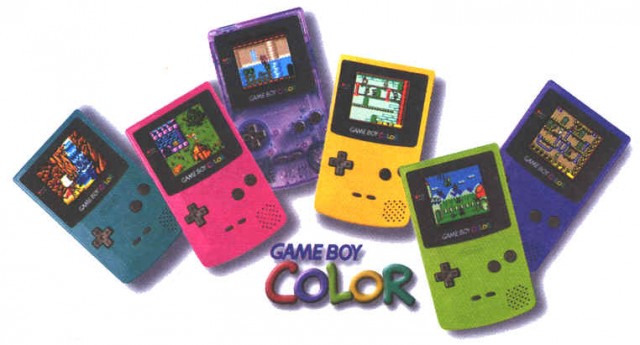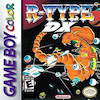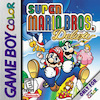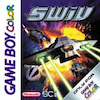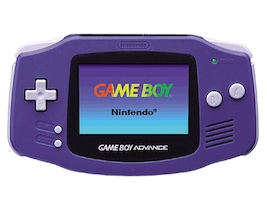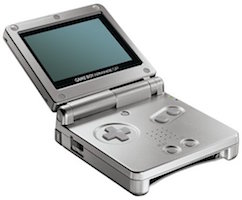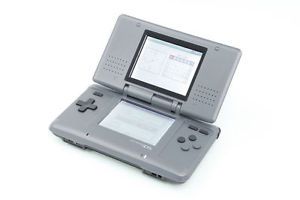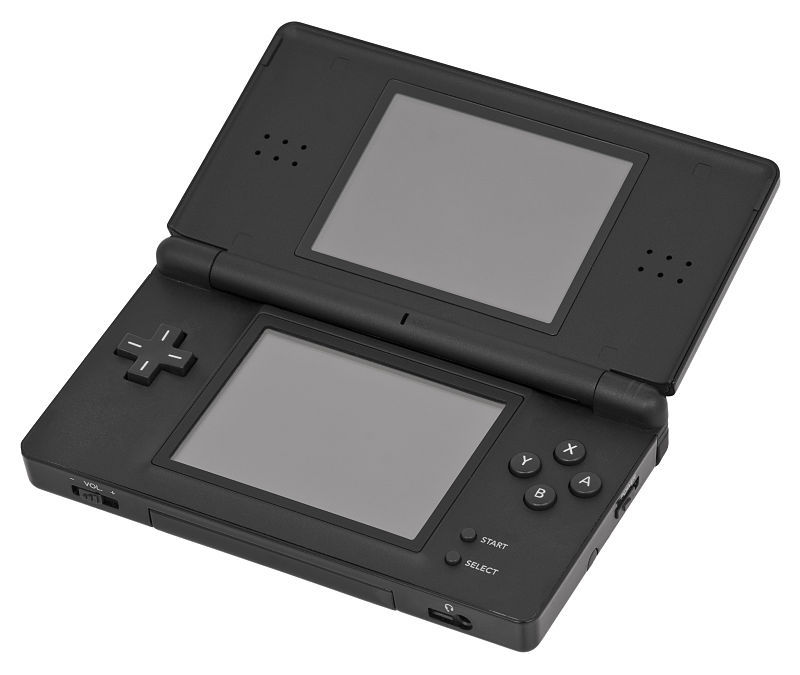What’s chunky, cream coloured, and has a screen capable of displaying four shades? It’s the legendary Nintendo Game Boy.
I have always lagged behind in terms of technology – very rarely having the latest offerings or models. This is where my love of low-end kit stems from, and this goes for games consoles too.
1989/1990 saw Nintendo release the Game Boy. It was the successor to the Game & Watch series of handhelds and saw a switch to putting games on removable cartridges, something continued through the entire Game Boy series and into the DS/3DS range too.
I should point out, it was not the first console, nor the first handheld console to use cartridges. The first home console was the Fairchild Channel F released in 1976, and the first handheld was the MicroVision by Milton Bradley in 1979.
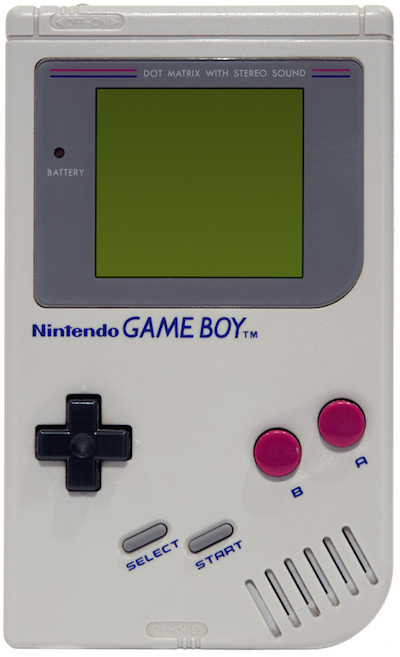 I got my Game Boy in around 1993, when it was well into its reign. It was my first ever games console and still a favourite of mine. I spent many hours a week hammering this amazing device, and it really kickstarted my tech lifestyle. Sitting here reminiscing, it is hard to believe I sat hunched over a 5.8” console that only ran at 4.19 MHz* with 8 KB RAM and a display that only had 4 shades, light to dark olive grey – but that thing came everywhere with me.
I got my Game Boy in around 1993, when it was well into its reign. It was my first ever games console and still a favourite of mine. I spent many hours a week hammering this amazing device, and it really kickstarted my tech lifestyle. Sitting here reminiscing, it is hard to believe I sat hunched over a 5.8” console that only ran at 4.19 MHz* with 8 KB RAM and a display that only had 4 shades, light to dark olive grey – but that thing came everywhere with me.
Despite competition from the Sega Game Gear, Atari Lynx, and NEC TurboExpress, who offered portables with full colour screens around the time of the Game Boy, it was Nintendo who ruled the portable scene.
Its mono/green screen didn’t put people off, because that lack of a colour backlit screen was reflected in battery life. While the competition could stretch 3 to 5 hours on 6x AA batteries, the Game Boy could manage 15 to 30 hours on 4x AA batteries.
This meant it truly was a portable console, without the need to carry a bag of batteries or a power adapter with you.
It was an extremely robust console with a d-pad on the left, two play buttons, and a start and select button. The right had a volume controller and extension connector. The left had a screen contrast controller. The console only had a built-in mono speaker, but it does have a stereo headphone.
The Game Boy had an impressive range of games and built on its Mario franchise from the Nintendo Entertainment System released a few years earlier. Tetris is one of the most addictive and successful puzzle games ever, and while it had been on the NES since 1984, bringing it to the Game Boy catapulted both the game and the console into the public eye, and both became a huge success.
It might have only had a mono screen measuring a mere 160 x 144 pixels, but the gameplay was amazing. Portable gaming had previously meant cut-down gaming, but the Game Boy brought full size home console gaming to the handheld world.
Some of my favourite original Game Boy titles were:
- Burai Fighter Deluxe – a side scrolling shooter ported from the NES.
- Dynablaster – a Bomberman style game.
- Kirby’s Dream Land – a cute platformer who sucked in and spat out enemies.
- Lamborghini American Challenge – an Outrun style racing game.
- Nintendo Tennis – an early tennis game.
- Nintendo World Cup – a hilarious but very fun football game.
- Qix – a quirky fast paced puzzler.
- Race Drivin’ – an early attempt at 3D racing.
- R-Type – the king of side-scroller shooters.
- Super Mario Land – the first Mario adventure on the Game Boy.
- Super Mario Land 2 – a sequel to the above and vastly improved.
- Super RC Pro AM – a third person racing game.
- Tetris – quite possibly the greatest puzzle game ever.
- Wario Land – this was a sequel to Super Mario Land 2, giving Wario the lead.
- Yoshi’s Cookie – another classic puzzler game.
Revamp
In 1995, Nintendo re-released the Game Boy in a selection of colours – including a transparent version – under it’s Play It Loud campaign, boosting sales.
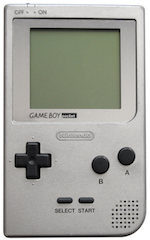 Game Boy Pocket
Game Boy Pocket
A smaller version called the Game Boy Pocket was released in 1996. It ran off 2x AA batteries, and while still having a mono screen had an improved screen, offering a more grey than olive coloured screen.
Game Boy Color
In 1998, Nintendo finally released a colour version of the Game Boy, which sported a similar look and size to the Game Boy Pocket.
It still had an 8-bit processor but clocked at 8.34 MHz – nearly double that of the original Game Boy – and packed in 32 KB RAM and a colour screen capable of displaying up to 56 colours at one time out of its 32,768 colour palette.
The Game Boy Color was backward compatible with the entire Game Boy back catalogue, and some Game Boy Color games could run on the Game Boy too. Clear Game Boy Color cartridges would only run on a Game Boy Color; black ones would run on both Game Boy and Game Boy Color.
The advances in technology meant that, unlike earlier attempts at colour handhelds that could only manage 5 or 6 hours, the Game Boy Color could manage 30+ hours on a single set of 2x AA batteries.
My favourite Game Boy Color games were:
- Grand Theft Auto – the first top down version of the violent racer.
- R-Type DX – an updated colour version of the classic side shooter.
- Super Mario Bros Deluxe – a Mario game based on Super Mario Bros 1 and 2.
- Swiv – fast paced shooter.
- Tetris DX – an updated colour version.
Between the original Game Boy, the revamped Play It Loud! version in various colours, and the Game Boy Color, Nintendo racked up a staggering 118 million units sold.
Game Boy Advance & SP
The Game Boy Advance and Advance SP could play Game Boy and Game Boy Color games – and the best way to enjoy all these is on the Game Boy Advance SP, with its built-in battery, layout similar to the original Game Boy, and lovely backlight screen for playing in any light.
Beyond the Game Boy
In 2004 Nintendo dropped the Game Boy name and changed to its DS system – standing for dual screen. The original DS and DS Lite could play Game Boy Advance games, but its primary game slot was reduced to a 35mm x 33mm mini cartridge.
Sega, Atari, NEC, SNK, Bandai, and various others – and even Sony – all tried to compete with Nintendo in the portable market but failed in comparison.
The DS and 3DS range cement Nintendo as the king of handhelds, and no doubt future releases will follow this trend.
Durabilty
Its playability, durability and strong collection of games shows just how amazing the Game Boy range was. The Game Boy and Game Boy Color had over 1,400 games released between them from 1989 to 2002.
It really is hard to believe that in a time when home console makers, including Nintendo, were pushing 32-bit/64-bit behemoths such as the Sega Saturn, Sony Playstation, and the Nintendo 64 – and we were beginning the sixth gen 128-bit era – the Game Boy in its 8-bit, 4 MHz glory was still on the market.
Legacy
We might be rocking two 266 MHz processors with 64 MB RAM in the 3DS range these days vs the 4 MHz with 4 KB RAM in the original Game Boy, but it is still with us – maybe not in hardware, but original Game Boy and Game Boy Color games – such as titles from Kirby, Mega Man, Mario, PacMan – are available for download in the Virtual Console on the 2DS/3DS.
Interestingly, some 8-bit/16-bit classics from the NES, Game Gear, and MegaDrive are also available on the Virtual Console.
Conclusion
I would love to pick up one of these again, but which model would be a tricky choice. For nostalgia reasons, an original would be good, but a Game Boy Color would give access to newer games, however an Advance SP gives a better play experience.
The Game Boy will go down in history as the portable console that changed gaming on the go forever.
- The Game Boy was built around the Sharp LR35902 CPU, which is based on the Zilog Z80. The Z80 was used in many early personal computers, especially the Radio Shack TRS-80, the Sinclair ZX80, and the Osborne 1 portable. It was frequently used in arcade games, early gaming consoles, and a number of TI scientific calculators. Pretty good track record for a CPU introduced in 1976!
Follow Simon Royal on Twitter or send him an Email.
Like what you have read? Send Simon a donation via Tip Jar.
Interested in low-end gaming? Join Low End Gaming on Facebook!
keywords: #nintendo #gameboy #gameboycolor #gameboypocket #gameboyadvance #techspectrum #simonroyal
short link: http://goo.gl/mnmhSs
searchwords: gameboy


